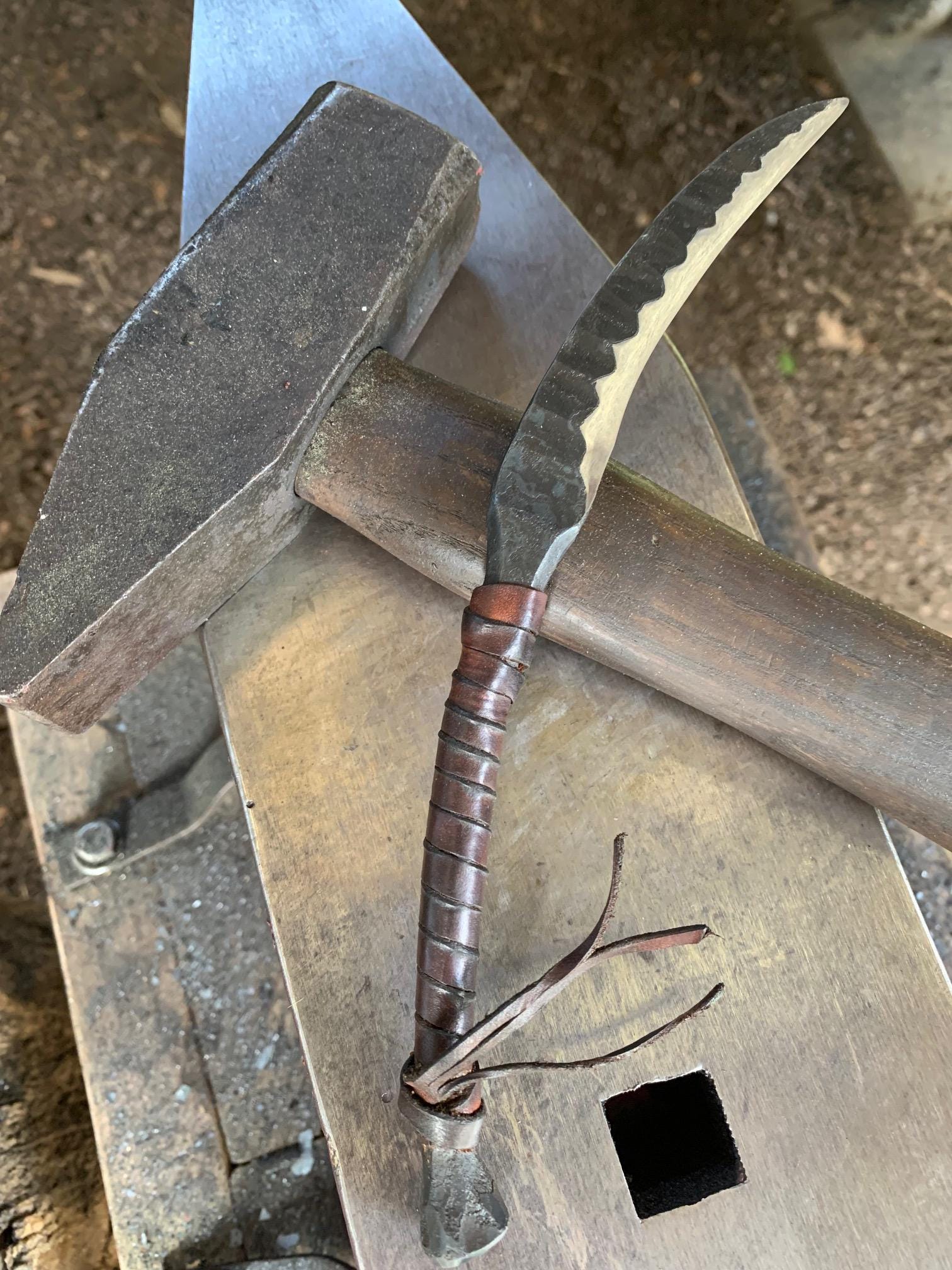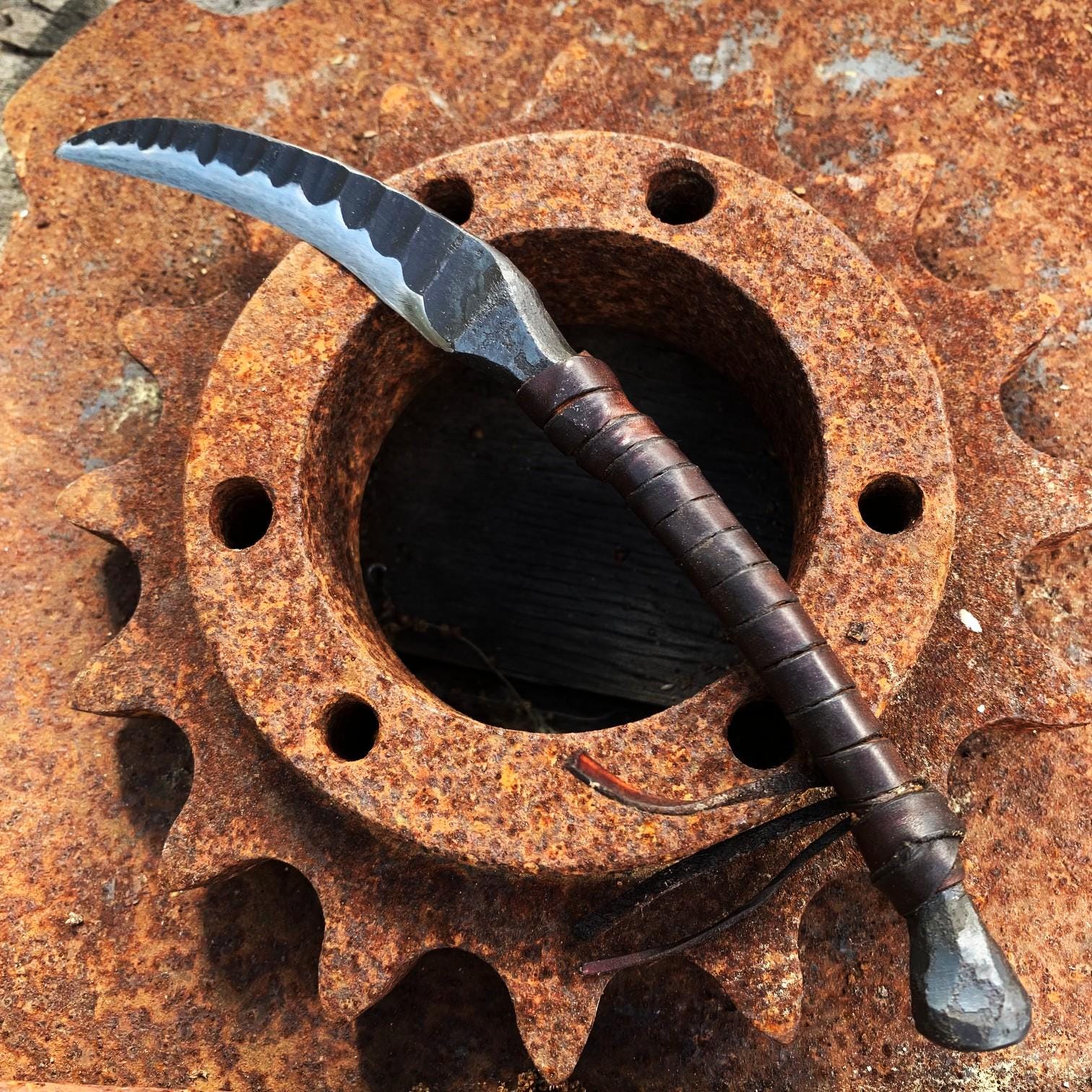
Forging Magic into Steel: Hobgoblin Blades
When I light the forge at Ravenstead, it’s never just about making a knife. It’s about shaping something that feels like it belongs to another world — a blade that looks like it could have been pulled from the ruins of an old kingdom, or scavenged from the belt of a wandering raider, or found buried under the roots of an ancient tree. That’s the spirit behind Hobgoblin Blades. Each blade I make starts with a simple truth: the materials matter.

I use hardened and tempered spring steel because it carries the right balance of strength, resilience, and spirit. Spring steel isn’t delicate. It’s the kind of metal that’s meant to take a beating, survive it, and carry the scars proudly. That’s what I want in a knife — something that looks like it has a story even before you put it to use. The forging process at Ravenstead is a dance of fire, hammer, and patience. I start by cutting and shaping the steel, heating it until it glows a deep orange, then hammering it into form. Every strike leaves its mark. I don’t chase perfection in the factory sense — I chase character. Each knife should feel alive in your hand, a little wild around the edges, but tempered by craft and care. After shaping, I harden the blade through a precise heat-treating and quenching process. Then comes the tempering — heating the blade at lower temperatures to draw out just enough toughness to balance the hardness. A blade that's too hard can snap; one that's too soft bends and stays bent. I walk the line between the two, the same way a good blade walks the line between beauty and brutality. Handles are wrapped by hand, usually in leather, giving each knife a rugged, primal feel. I like leather because it ages with you — it darkens, it softens, it remembers. Much like the blade, it becomes yours the more you carry it. Take a knife like Gravespindle.

